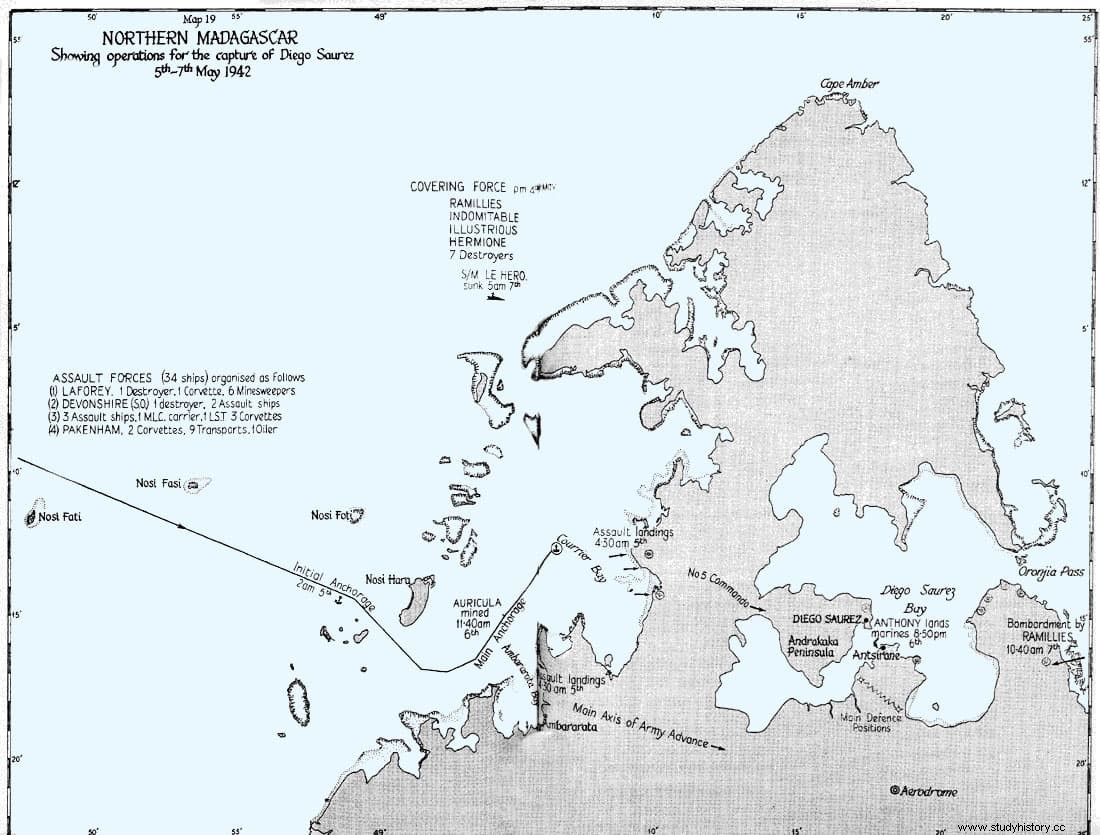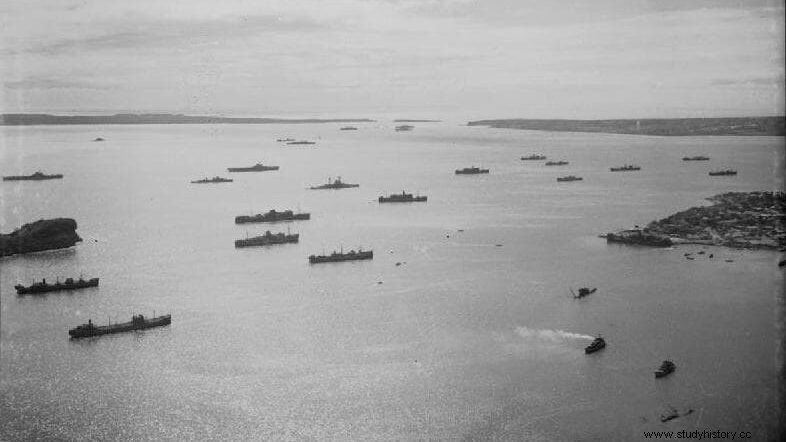The Second World War It has that adjective because of the number of belligerent countries that took part, from all continents, but it can also be understood why the operations were carried out throughout the world; even in apparently unsuspected places such as the Indian Ocean, in its part corresponding to the southeastern African coast. Specifically, the battle of Madagascar was fought there .
Madagascar is a large island -the largest in Africa- which has very special natural characteristics:in another time it was part of the continent, but ended up separating from it, so that it developed its own habitat and fauna, with endemic and unique species. That piece of land was discovered in 1502 by the Portuguese , who were the ones who gave it its name based on an island country cited by Marco Polo. During the following centuries it was a slave quarry for the Viceroyalty of Peru and a hideout for pirates, then passing briefly through British hands until the French they occupied the island and turned it into a protectorate .

This is how things were when in 1941, in the middle of the world war and under the control of the Vichy government , Japanese expansionism throughout the Indian Ocean region began to cause concern in London. Madagascar was a tempting candy for Japan, which if conquered would have an excellent base for its submarines and planes , threatening the maritime traffic that connected Europe with Australia and the Asian colonies and, more specifically, with India. After all, the main route was through the Suez Canal and its outlet to the Red Sea could be controlled from what would be a Malagasy forward base. On top of that, the submarines of the Imperial Navy had an extraordinary autonomy, superior to most of those of the Allies. The fall of Burma in the middle of 1942 it caused even more alarm because the Royal Navy had to take refuge in Mombasa, dangerously close to Madagascar.
When at the end of March of that year it became known of a meeting between the German and Japanese Vice Admirals Fricke and Naokuni Nomura to deal with the evolution of the war in the Indian Ocean, confirming the news of previous meetings and which in April resulted in the dispatch of several submarines and two auxiliary cruisers to the area, it was clear that London could not just sit idly by and wait events. Therefore, a plan was drawn up to deal with the problem that was baptized with the name of Operation Ironclad (Operation Battleship) and involved making an amphibious landing on the island; the French could not be counted on, since the Vichy regime was too suspected of collusion with Nazi Germany and, in any case, had nothing to oppose if the Axis insisted on installing bases there.
Avoiding informing De Gaulle so that he would not demand to participate, a first draft of the plan was drawn up, then called Operation Bonus , according to which those responsible for the occupation would have as their main component the ships of the H Force (Western Mediterranean):one battleship, two aircraft carriers, two cruisers, eleven destroyers and minesweepers, two corvettes and other auxiliary ships totaling fifty units, plus four thousand men, mainly commandos and Royal Marines, all of which would be grouped under the name of 121 Force under the command of General Robert Sturges. The date was set for the end of April. The initial objective was to take the port of Diego Suárez , defended by the eight thousand soldiers -mostly natives and Senegalese- of General Armand Léon Annet .

The landing, the first carried out by the British forces since that Gallipoli failure in 1915, took place on May 5, 1942 in the Antsiranana Bay , located to the north of the island and where there was a good port that was once used for coaling. As Pétain did not even imagine that the British would not take his claimed neutrality seriously, Annet had to defend himself as best he could with his limited means :just four obsolete ships, five submarines, about thirty planes and several coastal batteries; these were captured at night by commandos and did not fire, so the only problem for Force 121 was a French submarine that sank a corvette before also ending up on the seabed. Annet did resist hard for a couple of days in Diego Suárez; then he withdrew to the south. The French submarines were destroyed in combat and, curiously, three weeks later the anchored British fleet came under attack from two Japanese mini-submarines who sank an oil tanker and damaged the battleship HMS Ramillies (header photo), although one of the Japanese ended up running aground and the other was sunk.
The total and effective occupation of Madagascar took several months and the arrival of successive reinforcements, although there were no major battles and everything was reduced to skirmishes, except perhaps a new landing in Majunga and the final resistance in Antananarivo, since the main problem was the terrain, mountainous and very lush, without hardly any roads and it also got worse because the rainy season came on top. . However, Annet surrendered on November 8 and he was replaced by another Gaul but from the allied side, General Paul Legentilhomme. The number of casualties it was not high and concentrated above all on the action of Diego Suárez:one hundred seven British dead and two hundred eighty wounded for one hundred and fifty enemy dead and half a thousand wounded. A bargain price for preventing Madagascar from falling to the Axis.
